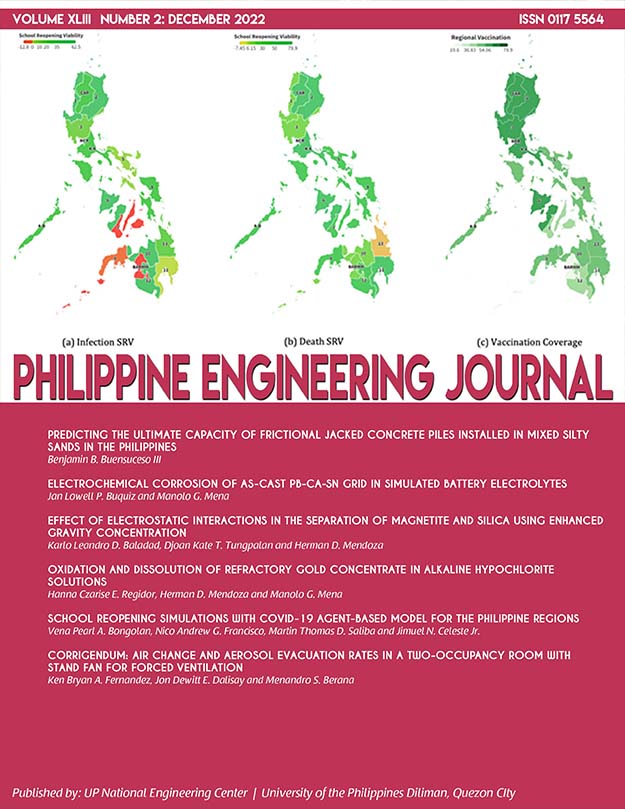Oxidation and Dissolution of Refractory Gold Concentrate in Alkaline Hypochlorite Solutions
Abstract
With the decreasing availability of free milling gold ores today, the development of processes that can treat refractory ores are important. A promising option from these is chlorination. It is capable of both dissolving the gold and oxidizing the ore, which removes the “refractory” nature of the ore. A staged leaching process can then be used where the first part would focus on the pretreatment oxidation of the refractory ore, followed by the second part where the dissolution of the gold exposed will be the focus. In this study, a Box-Behnken test of the pretreatment process has been conducted. The chlorination process consists of oxidation using hypochlorite-bearing reagents at alkaline conditions. Screening tests were done to determine the significant factors, and it was found that the factors hypochlorite concentration, percent solids, and oxidation time had a significant effect on the oxidation and dissolution of gold. Three levels were set for each of these factors in the optimization tests, and results show that a gold recovery of 83% can be obtained at 4.3 hours of oxidation, 0.6 moles of hypochlorite and 28% percent solids from a sulfide concentrate grading 102.5 g Au, leaving 17.4 g/t Au in the tails. Powder XRD patterns and SEM-EDS results validated that oxidation took place. Keywords: Electrochemical Oxidation, Hypochlorite, Chlorination, Response Surface Methodology
With the decreasing availability of free milling gold ores today, the development of processes that can treat refractory ores are important. The mostA promising option from these processes is chlorination. It is capable of both dissolving the gold and oxidizing the ore, which removes the “refractory” nature of the ore. A staged leaching process can then be used where the first part would focus on the pretreatment oxidation of the refractory ore, followed by the second part where the dissolution of the gold exposed will be the focus. In this study, a Box-Behnken test of the pretreatment process has been conducted. The chlorination process consists of oxidation using hypochlorite-bearing reagents at alkaline conditions. Screening tests were done to determine the significant factors, and it was found that the factors hypochlorite concentration, percent solids, and oxidation time had a significant effect on the oxidation and dissolution of gold. Three levels were set for each of these factors in the optimization tests, and results show that a gold recovery of 83% can be obtained at 258 4.3 hours minutes of oxidation, 0.6 moles of hypochlorite and 28% percent solids from a sulfide concentrate grading 102.5 g Au, leaving 17.4 g/t Au in the tails. Powder XRD patterns and SEM-EDS results validated that oxidation took place.
Keywords:- Electrochemical Oxidation, Hypochlorite, Chlorination, Response Surface Methodology


